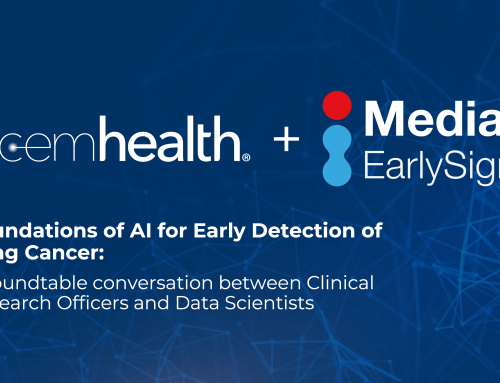
Advancements in Liver Disease Treatment: Spotlight on MASLD and MASH
The treatment of liver diseases is approaching an important transition, as recent advancements provide new hope for individuals affected by Metabolic Dysfunction-Associated Steatotic Liver Disease (MASLD) and Metabolic Associated Steatohepatitis (MASH). This blog post aims to explore the latest breakthroughs, the potential impact of these advancements, and the hopeful future for MASLD and MASH treatment strategies.
Understanding MASLD and MASH
MASLD, previously known as Nonalcoholic Fatty Liver Disease (NAFLD), and its advanced form, MASH, have emerged as the most common liver disorders across the globe. Characterized by excessive fat accumulation in the liver not caused by alcohol abuse, these conditions are closely linked to metabolic syndromes such as obesity, type 2 diabetes, and other serious comorbidities.
The progression to MASH—marked by liver inflammation and damage—further escalates the risk of cirrhosis, liver failure, and liver cancer, underscoring the urgent need for effective treatment options.
Historical Challenges in MASLD and MASH Treatment
Limited Treatment Options
Historically, one of the most significant challenges has been the absence of specifically approved pharmacological treatments for MASLD and MASH. For many years, treatment strategies relied on managing co-existing metabolic conditions rather than directly addressing liver health. Clinicians often recommended interventions such as:
- Lifestyle Modifications: The primary recommendation for managing MASLD and MASH has centered around lifestyle changes, particularly weight reduction, dietary adjustments, and increased physical activity. Studies have shown that a 5-10% reduction in body weight can significantly improve liver histology in MASH patients but achieving and maintaining this weight loss is often challenging for many patients. [1]
- Off-Label Use of Medications: Medications intended for other conditions, such as insulin sensitizers (e.g., pioglitazone), have been used off-label with mixed efficacy. While some patients experienced improvements in liver enzymes and insulin sensitivity, these treatments did not directly target the underlying mechanisms of liver inflammation and fibrosis. [2]
Diagnostic Challenges
Diagnosis of MASLD and MASH also have posed significant hurdles. Traditionally, the gold standard for diagnosing these conditions has been liver biopsy, an invasive and more involved procedure. This limited the ability to diagnose the disease early and accurately monitor its progression over time.
The non-specific symptoms of MASLD and MASH, often manifesting as fatigue or vague abdominal discomfort, further complicated early detection and intervention. Many patients remain undiagnosed until the disease has progressed to more severe stages such as cirrhosis or hepatic carcinoma.
Lack of Standardized Care Protocols
Another historical challenge was the lack of standardized care protocols or clinical guidelines specifically tailored for MASLD and MASH. This led to varied approaches to treatment and patient management, often depending on the expertise and resources available to a particular healthcare provider or institution. Variable treatment strategies made consistent patient outcomes difficult to achieve.
Recent Treatment Advancements
Newly approved treatments, and those in later stage trials, bring novel options for treating MASH.
Resmetirom (Rezdiffra) and Its Impact
Resmetirom is a liver-targeted thyroid hormone receptor-β (THR-β) selective agonist that addresses critical aspects of MASH, including fat accumulation, inflammation, and fibrosis, by enhancing the metabolic function of the liver. This treatment action tackles the disease’s underlying mechanisms rather than merely treating its symptoms.
Clinical Trials and Efficacy
In clinical trials, resmetirom has shown promising results. It not only improved hepatic steatosis—the accumulation of fat in the liver—but also alleviated inflammation and fibrosis, key factors that contribute to the progression of MASH. The drug operates through selective activation of the thyroid hormone receptor pathway, known to play a vital role in liver metabolism and function.
For patients with MASH, especially those with stage 2 to 3 fibrosis, resmetirom’s approval is important given the previous lack of approved pharmacotherapies for this advanced stage of liver disease.
Limitations and Considerations
While the approval of resmetirom indicates a potential shift in treating MASH, there are important considerations and limitations to bear in mind:
- Clinical Efficacy–While resmetirom has shown efficacy in clinical trials, it’s important to note that its benefits vary among patients. Approximately 25–30% of MASH patients experience significant treatment benefits. [3]
- Cost of Treatment–The cost implications of resmetirom are a critical factor, potentially affecting access and affordability for many patients. As a novel pharmacotherapy, resmetirom’s price may pose a barrier.
- Focus on Moderate to Advanced Fibrosis Only–The current approval and use of resmetirom are focused on MASH patients with moderate to advanced fibrosis, which may not address the needs of all patients, particularly those at earlier stages of the disease or with different fibrosis levels.
GLP-1 Receptor Agonists for Liver Disease Treatment
Recently, GLP-1 receptor agonists (GLP-1 RAs) have garnered interest for assisting in treatment of liver disease. Originally developed to address obesity and diabetes—conditions linked with MASLD and MASH—these agents have shown promising outcomes in reducing liver fat, mitigating inflammation, and improving fibrosis.
Clinical Trials and Efficacy
Semaglutide and liraglutide, members of the GLP-1 RA class, are relevant examples as treatment alternatives to resmetirom. The efficacy of these drugs in addressing liver health becomes evident when considering a phase II clinical trial for the treatment of non-alcoholic steatohepatitis (NASH), which placed semaglutide under the spotlight. The trial revealed meaningful outcomes, with 59% of patients exhibiting NASH resolution without worsening fibrosis, compared to just 17% in the placebo group – highlighting the potential for GLP-1 RAs in liver disease treatment. [4]
Emerging Perspectives on Dual Agonist Treatments
Moreover, the cutting-edge research into combining GLP-1 RAs with other agents, such as bempedoic acid or tirzepatide, opens avenues for more comprehensive therapeutic strategies. These combinatory treatments, known as “twincretins,” aim not only to target the GLP-1 receptor but also to counteract other pathological pathways implicated in MASLD and MASH, presenting an innovative avenue for more effective, multifaceted approaches. [5]
Combining Novel Treatments & Technology
With the advent of these newer therapies, there is real opportunity to treat and manage liver disease for patients more effectively than ever before, but it still does not solve the challenge of effectively finding and diagnosing patients with liver disease before it has progressed to a more advanced stage.
Improving Assessment & Diagnostic Efficiency
Luckily, diagnosis has become much more efficient with non-invasive tests like Enhanced Liver Fibrosis (ELF™)test and elastography technologies like transient elastography (FibroScan). Instead of invasive testing with a liver biopsy, these modalities provide alternatives to assess liver fibrosis’s presence and severity, offering insights into disease progression or resolution.
Advancing Early Detection
The remaining piece of the puzzle to solve is how providers can find an efficient way to target patients who appear to be at higher risk for liver disease but may not be presenting symptoms yet. As we touched on in our last blog post, one of the most compelling options is to deploy AI against existing patient data commonly found in electronic health record (EHR) systems. Instead of trying to use broad outreach campaigns based on factors such as obesity or large-scale testing of patient populations (which tends to be incredibly inefficient and costly), advanced clinical AI can flag a more statistically likely group of patients for disease onset and progression. This focused targeting increases resource allocation for patient outreach, assessment, diagnosis, and treatment, while improving patient outcomes and ultimately provider organization bottom lines.
If you are curious to learn more about earlier detection of MASLD and MASH using advanced clinical AI, get in touch!
